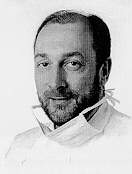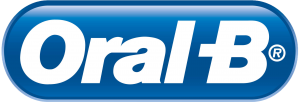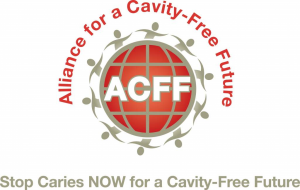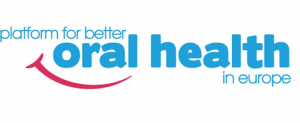
NEWSLETTER Number Three September 1999
INTERNATIONAL SYMPOSIUM ON RESTORATIVE PAEDIATRIC DENTISTRY, BRUSSELS,BELGIUM,MARCH 1999
NOMIMATIONS
EAPD PRIZE
29TH ANNUAL MEETING OF THE HELLENIC SOCIETY OF DENTISTRY FOR CHILDREN
USE OF DENTAL AMALGAM IN CHILDREN IN EUROPE
APPLICATIONS FOR EAPD MEMBERSHIP
ABSTRACTS
EJPD GUIDELINES FOR AUTHORS
 †Dear Colleagues,
†Dear Colleagues,
Summertime is over! Our holidays are gone and receiving this newsletter means that the IAPD congress in London is already history! I'm not really aware of the attendance by EAPD members but anyway the global attendance reached 800 people. The scientific program was huge for a three day meeting and I hope you all had a fruitfull congress, the last world meeting, before the next century.††
The EAPD board and the EAPD council meeting were scheduled for September 2nd.†† Besides pending tasks the main issues were `The European Joumal of Paediatric Dentistry (EJPD)' and the `5th EAPD Congress'.†† We reported extensively on the journal in the former issue (June ) and everything is going as planned.†† The joint venture between SIOI and EAPD is almost a fact!†† We further decided on the EJPD editorial board.†† As already announced Prof. Curzon was appointed as editor in chief and Prof. Koch was appointed for EAPD as associate editor. To get started two more assistant editors for EAPD were `ad interim' accepted (Martens - Toumba).†† At the next council meeting in Bergen, we should decide on a formal editorial board.† For the assistant editors it was agreed that there will be a representative for every region (Northern, Central, Southern and Eastern) in Europe. Representatives will be appointed by the EAPD council after selection on personal scientific CV by the EAPD board.††
I would like to invite all members involved in research projects to publish in the journal.†† It's our goal to reach a high scientific standard as soon as possible.†† For this we need much enthusiasm of all our members, and from a lot of wellknown researchers in Europe and abroad.† As we start in March 2000 and will produce 4 issues a year, this means that there is a need for 24 good scientific papers and a maximum of 8 quality case repons every year. Papers can be submitted to our secretary and future editor in chief Prof.† M. CURZON.†
With respect to the 5th Congress in BERGEN, Norway, I'm very pleased with all the efforts of Prof. M. RAADAL and his team.† The second announcement, being a complete booklet, was available at the IAPD congress and will reach you in due course.† As you will notice the scientific program looks great!† Taking into account the exciting venue of the Norwegian city, this congress should be really ‚Äėa must' for interested European Paediatric Dentists.† A biannual congress can also be seen as one of the possibilities for continuing education; this is a second reason to come to Bergen.† It's your presence and contribution that will keep the academy strong.†
We will celebrate the 10th anniversary of EAPD in Bergen.† I am really looking foreward to seeing you all and to be proud of our organisation supported by its members!
Kind Regards
Luc C MARTENS
Brussels, Belgium, March 1999.

Speakers at the International Symposium on Restorative Paediatric Dentistry Held in Brussels, Belgium During March 1999. Shown left to right are: M. Raadal (Bergen, Norway), M. Curzon (Leeds, U.K.), C. Oulis (Athens, Greece), J. Roberts (London, U.K.), L. Marks (Gent, Belgium), L. Martens (Gent, Belgium), N. Lygidakis (Athens, Greece) and R. Verbeeck (Gent, Belgium).
†
Nominations are required from EAPD members for the following posts, as per Chapter X of the Constitution:†
1) President-Elect, to become President in 2002.
2) Secretary.†
3) Treasurer.
4) Co-President for the Congress in 2002.
The present Secretary is Professor Martin Curzon and the Treasurer is Dr. John Roberts.† Periods of office for these posts are for two years and cannot be held for more than six years consecutively.† Professor Curzon was first elected in 1994 and Dr. Roberts in 1996.
Nominations must be proposed by at least two active members of the EAPD and must be accompanied by a letter signed by the candidate agreeing to the nomination.† Nominations should be sent by February 1st 2000 to the Chairman of the Nominations.Committee, Assistant Professor C.† Oulis (address below). The nominations will be presented to the membership at the next biennial assembly in Bergen, where the elections will be held.
Chairman of Nominations Committee:
††††††††††† †Frof. Constantine Oulis,
Chairman of EAPD Nominations Committee,†
22 Koundrou Street,
Halandri,
†Athens 152 31,
GREECE
Tel: +30 1 67 56 42 0/ 1
Fax: + 30167 49 26 3†
e-mail: cjoulis@techlink.gr
EAPD PRIZE
A prize of £1,000 will be awarded at the EAPD Congress to be held in Bergen in June 2000. The prize will be awarded to a young dentist, working within Europe, either in postgraduate training; proposing to start training or within two years of completion of training. The prize will be awarded to the best submission on a proposed research study on the topic of:
RESTORATIVE MATERIALS IN PAEDIATRIC DENTISTRY
The submission should be single spaced of no more than four (4) pages of A4 paper in 12 point print and should give:
1 ) The name of the student and their sponsor.†
2) The background to the study.
3) The work study plan.
4) The timetable of research.
5) Key references to support the rationale for the research.
Only one submission is allowed per student. Four (4) copies of each submission for the EAPD Prize should be sent to:
The Hon. Secretary, EAPD Office,
20 Rishworth Street, Wakefield,
WF1 3QS,
U.K.
Deadline for submissions: 1st May 2000.
All submissions will be considered by the Scientific Committee at the Congress in Bergen and the winner will be announced at the Congress Banquet.
29TH ANNUAL MEETING OF THE HELLENIC SOCIETY
OF DENTISTRY FOR CHILDREN
The Annual Meeting of the Hellenic Society of Dentistry for Children is one of the most popular meetings for our colleagues.† It is held every year in a different place in Greece and combines an interesting scientific program with an inviting program of social events.
This year the 29`" Annual Meeting was held from the 28th† to 30th of May 1999 in Ancient Olympia the place where the old Olympic Games, predecessors of the present day ones, were established in ancient times and held every four years. Ancient Olympia is located in an idyllic environment of a variety of green plants in which the prominent place is occupied by the olive trees.† The sanctuary of Olympia, which includes the Gymnasium, the Palaestra, the Stadium, the Temple of Zeus, the Workshop of Phidias etc, is one of the leading wellkept archaeological sites in Greece with an excellent museum. The famous Parian marble statue of Hermes of Praxiteles (330 BC), which is the top jewel of the museum, astonishes the viewer with its beauty and elegance and portrays the perennial ideal form of adolescent beauty.
The scientific program included two central themes, three round table discussions and several free papers.
The first central theme was "Strategies for Diagnosis and Management of Early Carious Lesions in Children". The main speaker on this subject was Assist. Prof. C. Oulis. He discussed in detail the most usable and extensively tested diagnostic methods in clinical practice for the detection of early carious lesions, especially when there is no clinical sign of cavitation or when cavitation is difficult to be verified. The speaker pointed out the benefits of accurate early detection for the prevention or the restoration of early carious lesions preserving considerable tooth structure.
The second central theme was "Craniomandibular Dysfunction in Children and Adolescents". The main speaker was Assist. Prof. Dr. A. Vanderas who in his presentation analysed the relationship between malocclusion, oral parafunctions, emotional states, dentofacial injuries and signs and symptoms of the dysfunction. Medical histories as well as the history of the dysfunction, a clinical examination of the stomatognathic system and a radiographic examination of temporomandibular joint were included in the diagnostic process. The speaker concluded with the diagnosis and treatment of some cases of dysfunetion.
The subject of the first round table discussion was "Dental Materials Currently Used in Paediatric Dentistry".† The participants were Assist. Prof.† N: Kotsanos who was also the co-ordinator, the Lecturer Dr. K. Tolides and Dr. T. Papathanassiou.† The main, part of the discussion referred to the coneept of a more conservative approach to restorative treatment with currently used materials. A critical review of the clinical performance of the modern dental materials revealed the need for a long term follow up as compared to amalgam and SSC restorations.
The second round table.discussion was on "Early Onset Periodontitis" and was co-ordinated by Prof.† Z. Mantzavinos, professor of Periodontology.† The other participants were Dr. J. Caroussis, Dr: M. Pepelassi, Dr. D. Synodinos and Dr. Th. Vrahopoulos.† The clinical, micrbiological and aetiopathological features of this entity were discussed together with its treatment.
The third round table discussion was an the "Maxilofacial Trauma in Children" and was co-ordinated by Prof. Dr: A. Angelopoulos, professor of Maxilofacial Surgery. Participants in this table were Assoc. Prof.† K. Alexandrides, Dr. K. Niamonitos, Dr. G. Vadiakas and Dr. A-M. Vierou.† They discussed the dentofacial trauma from the points of view of the paediatric dentist, the endodontist and the oral surgeon. The most significant outcome of the discussion was the importance of a thorough diagnosis, of an immediate and appropriate treatment and of a close follow up. Also, the necessity of co-operation among specialities for the most efficient treatment of maxilofacial trauma was pointed out.
The section of free papers included a good number of research papers from young paediatric dentists, orthodontists, other specialities and general practitioners.
The social events during the meeting included a guided visit to the archaeological site and the museum and various evening functions organised by the local Dental Society. These included a reception and a gala dinner in which the participants enjoyed the local wine and the food specialities.
The Hellenic Society of Dentistry for Children used the opportunity of its 29th Annual Meeting to organize a Preventive Week for the Children in the area.† During this Week nine paediatric dentists from the area of Peloponnesus and four Dental G.Ps. using two mobile clinics provided by the AIM Co. examined and offered preventive information and material to over 300 children. The results of the examination will be compared with similar ones from other areas of Greece.
Professor Lisa PAPAGIANNOULIS
President Hellenic Society of Paediatric Dentistry
I am trying to collect information on the use of dental amalgam in children throughout Europe. I have already collected information from numerous people within EAPD, but I would be extremely grateful if I could get replies from as many European countries as possible.
Please send very short replies to the following questions by either e-mail (to k.j.toumba@leeds.ac.uk or by fax (00 44113 233 6140):
1) Name of country.
2) Does your country have a policy on the use of amalgam in children or expectant mothers? (Yes/No).
3) If your country has a policy on amalgam use please give brief details:
4) Is amalgam use in children encouraged or discouraged by your dental society?
5) Is amalgam use in children requested or refused by the majority of parents in your country?
Many thanks
Jack Toumba
Leeds, U.K.
†
This is a reminder that applications for membership of the EAPD ideally should be typed or at the very least be clearly written.† A number of recent applications have been written so illegibly that it was impossible to decipher the address of the applicant. Applications should be sent to:
EAPD,†
20 Rishworth Street,†
Wakefield,†
WF 13FL,
Tel: +44 192 420 1905 Fax: +44 192 429 1806
e-mail: m.e.j.curzon@leeds.ac.uk
†
†
†
The Optimum Time to Initiate Habitual Xylitol Gum-chewing for Obtaining Long-term CariesPrevention.
P P Hujoel, K.K. Makinen, C.A. Bennett, K. P Isotupa, P J. Isokangas, P. Allen
and P.L. Makinen. Journal of Dental Research 1999:78(3):797-803.
This is an interesting report on the carry over preventive effect of xylitol habitual gum-chewing in children, up to 5 years after gum chewing has stopped. The goal of this report was 1 ) to determine if sorbitol and sorbitol/xylitol mixtures provide a long-term benefit, and 2) to determine which teeth benefit most from two year habitual gum-chewing. 510 children, on average 6 years old, chewed gums for two years, sweetened with xylitol, sorbitol or xylitol/sorbitol mixtures and there was a no gum control group.† Five years after the program had ended, 288 children, were re-examined.† Compared with the no gum group, sorbitol gums had no significant long-term preventive effect.† Xylitol gum however and to a lesser degree xylitol/ sorbitol gum had a long-term effect reducing the caries risk 59% and 44% respectively. The long-term caries risk reduction associated with xylitol strongly depended on when teeth erupted (p<0.02). Teeth that erupted before the gum chewing started had no significant long-term reduction (p<0.03) whereas teeth that erupted after 1 or 2 years of gum chewing had long-term caries risk reduction of 93% and 88% respectively.† Weaknesses of this study included the absence of randomization, the difficulties experienced in locating subjects 5 years after the termination of the habitual chewing although the sample seems suffcient and the lack of information on actual eruption dates. The carry over preventive effect found in this study, may be due to the emergence of a xylitol-resistant mutans population with less cariogenicity so as teeth that erupt after the xylitol exposure has stopped still receive the beneficial caries preventive effects.† In conclusion, for long-term caries-preventive effects to be maximized, habitual xylitol gum-chewing should be started at least one year before permanent teeth erupt.
Age of Onset of Dental Anxiety.†
D.Locker, A. Liddell, L.Dempster and D.Shapiro.††
Journal of Dental Research 1999: 78(3):790-796.
This is a study on an issue of particular interest for the paediatric dentist, the age of onset of dental anxiety.† The purpose of this study was to identify 1) the age of onset of dental anxiety and 2) differences by age of onset with respect to potential aetiological factors, such as negative dental experiences, family history of dental anxiety, and general psychological states.† Data were collected by means of two mailed surveys of a random sample of the adult population in a Canadian city.† Of 1420 subjects returning questionnaires, 16.4% were dentally anxious. Half, 50.9% reported onset in childhood, 22% in adolescence, and 27.1 % in adulthood. Logistic regression analysis, indicated that negative dental experiences were predictive of dental fears regardless of age of onset. There was no mention however whether paediatric dentists were involved in the dental treatment that inflicted negative experiences in children.† Interesting enough, a family history of dental anxiety was predictive of child onset anxiety only. Adolescent-onset subjects were characterised by trait anxiety and adult-onset subjects by multiple severe fears and symptoms indicative of psychiatric problems.† The three groups were similar in terms of their physiological, cognitive and behavioural responses to dental treatment.† However, adolescent and adult-onset subjects were more hostile towards and less trusting to dentists.† Limitations of this study was to its cross-sectional design and the fact that the associations between direct conditioning experiences and dental anxiety were based on subjects retrospective reports, subjected to problems of recall and retrospective re-interpretation. The main implication of this study for dental practice is that the dental team needs to take as much care with adult patients as with child patients and use appropriate communication techniques which enhance trust and feelings of control so as to reduce the incidence of dental anxiety in psychologically vulnerable adult individuals.
Katerina Kavvadia
(Lecturer, University of Athens, Greece).
†
†
†
European Journal of Paediatric Dentistry Guidelines for Authors
Submission of manuscripts.
Only original papers written in English are considered and should be accompanied by a covering letter signed by the authors stating that the manuscript is not being considered for publication in another journal. Only those who are actively involved in the work should be named as authors and in most circumstances this will be up to only three authors. Multiple authors, over and above three, must be justified. Copies of permission to reproduce material that has been published elsewhere, or to use illustrations that may enable readers to identify children or individuals, should be included.† Manuscripts should be sent to the Editors-in-Chief: Prof. M.E.J. Curzon., 20, Rishworth Street, Wakefield, England, WF13BY or to the Associate Editors.
Manuscripts should be submitted in triplicate (with three sets of illustrations of which one is an original) typewritten double-spaced on one side of A4 paper† with a wide margin. Each manuscript should ideally be accompanied by a computer disc (Word, Windows), which will not be returned, to speed up the assessment, editing and publication process. Both the hard copy and electronic versions of the manuscript should be identical in every way. Further details as to the submission of papers on disc may be obtained from the Editor.
Conditions. All manuscripts are subject to editorial review.† Submission of an article for publication implies the transfer of the copyright from the author to the publisher upon acceptance.† Accepted papers become the permanent property of European Journal of Paediatric Dentistry and may not be reproduced by any means, in whole or in part, without the written consent of the publisher.
ORGANISATION OF THE TEXT.
Research Articles. Title page: The first page of each paper should indicate the title, the authors' names with initials but without qualifications, and the institute where the work was conducted.† A short title, as running head, as well as the full address of the principal author, to whom correspondence should be sent, are also required.
Full address: The exact postal address complete with postal code must be given at the bottom of the title page.† Please also supply telephone and fax numbers, as well as an e-mail address.
Key words: For indexing purposes, a list of 3-5 key words in English is essential and a short running headline of no more than 30 characters
Abstract. Each paper requires an abstract to include brief details of the aim, study design, materials and methods, results, statistical methods, discussion of the findings and the main conclusions.
Materials and Methods must be clearly written and in sufficient detail for the work to be repeated by other workers. The FDI tooth notation system must be used.
Small type: Paragraphs which can or must be set in smaller type (case histories, test methods, etc.) should be indicated with a `p' (petit) in the margin on the left hand side.
Footnotes: Avoid footnotes. When essential, they are numbered consecutively and typed at the foot of the appropriate page.
Tables and illustrations: Tables and illustrations, black and white, (both numbered in Arabic numerals) should be prepared on separate sheets.† Tables require a heading, figures a legend, also prepared on a separate sheet.† For the reproduction of illustrations, only good drawings and original photographs can be accepted; negatives or photocopies cannot be used. Due to technical reasons, figures with a screen background should not be submitted.† When possible, group several illustrations on one block for reproduction (max. size 181 x 223 mm) or provide crop marks.† On the back of each illustration, indicate its number, the author's name, and `top' with a soft pencil.
Colour illustrations: Colour illustrations are available but there will be a charge per illustration. Because of the way that the journal is structured the use of coloured illustrations also requires an additional page set up charge. Authors wishing to consider coloured illustrations should consult with the Editor before submitting their manuscript.
References: The reference style is that know as Harvard.† Identify references [in square brackets] in the text by naming the authors and the year. 1. author: [Koch,1990]; 2. authors: [Martens and Marks,1998]; 3 and more authors: [Caprioglio et al.,1996].† Material submitted for publication but not yet accepted should be noted as `unpublished data' and may not be included in the reference list. The list of references should include only those publications cited in the text.†† Arrange the reference list in strict alphabetical order according to the examples given below.† The authors' surnames followed by their initials should be given, and each name should be separated by a comma.† Cite all authors, `et al' is not sufficient.† For papers by the same authors, listing should be according to the year; for papers by the same authors published in the same year, use the letters a, b, c, etc. directly (no space) connected to the year.† For jounal abbreviations, please use the Index Medicus system.† Authors will be responsible for the accuracy of the references both within the main text and within the reference list.† Authors are reminded to pay particular attention to the accuracy of references.
Examples.†
Papers published in periodicals:
Marthaler TM, O'Mullane, DM, Vrbic, V,: The prevalence of dental caries in Europe. Caries Res 1996;30:237-255.
Monographs:
Matthews DE, Farewell VT: Using and Understanding Medical Statistics. Basel; Karger, 1985.
Edited books:†
Curzon, M.E.J.: Strontium; in Curzon, M.E.J. and Cutress, T.W (eds): Trace Elements and Dental Disease. PSG-Wright, pp283-304.
Case Reports or Clinical Techniques. The format for these reports, which will be limited to no more than two per issue of the journal, should follow a similar layout to research papers.† The Title page, authors address should be the same.† There should be an abstract briefly describing the case and treatment provided.† The background to the clinical case/technique should be briefly explained and the case/ technique described in detail.† There must be a description of the clinical care carried out which must also have been followed up for a minimum of two years to indicate the degree of success.
Page charges. There is no page charge for papers of 6 or fewer printed pages (including tables, illustra¬≠tions and references). There will be a page charge levied for all pages in excess of the allotted 6 printed pages details of which may be obtained from the Editor.† The allotted size of a paper is equal to approx.18 manuscript pages (including tables, illustrations and references).
Galley proofs. Unless indicated otherwise, galley proofs will be sent to the first-named author and should be returned with the least possible delay, preferably within 48 hours. Alterations made in galley proofs, other than the correction of printer's errors, are charged to the author. No page proofs are supplied.
†Complimentary Copy. The corresponding author will be sent a complementary copy of the journal in which their paper has been published. Order forms and a price list for reprints will be sent with the galley proofs. Orders submitted after the issue is printed are subject to considerably higher prices.



